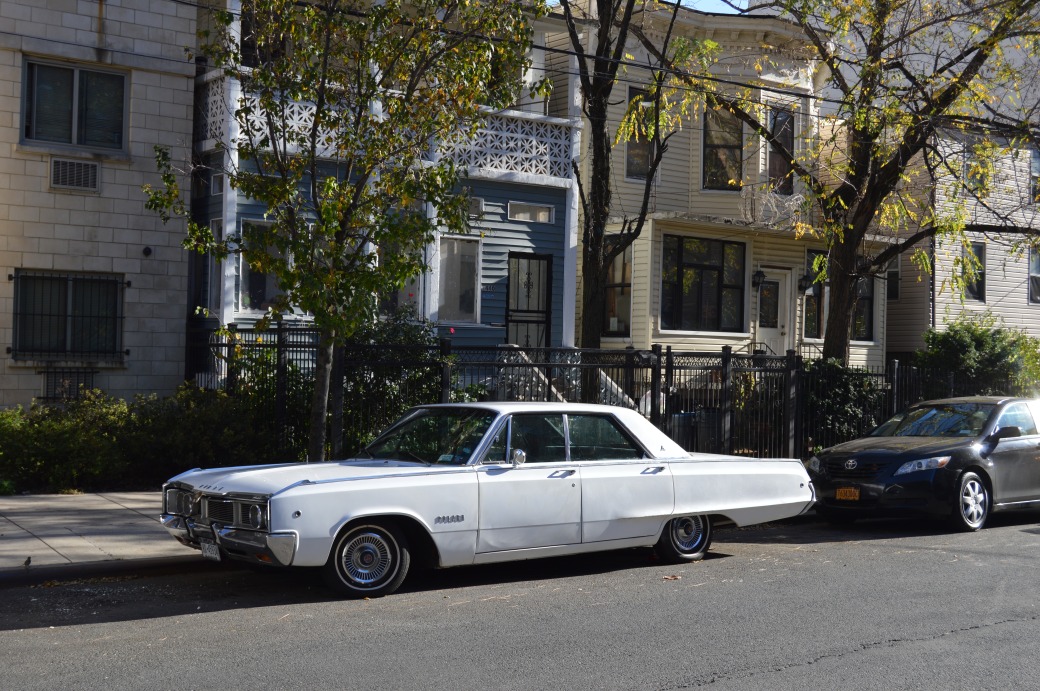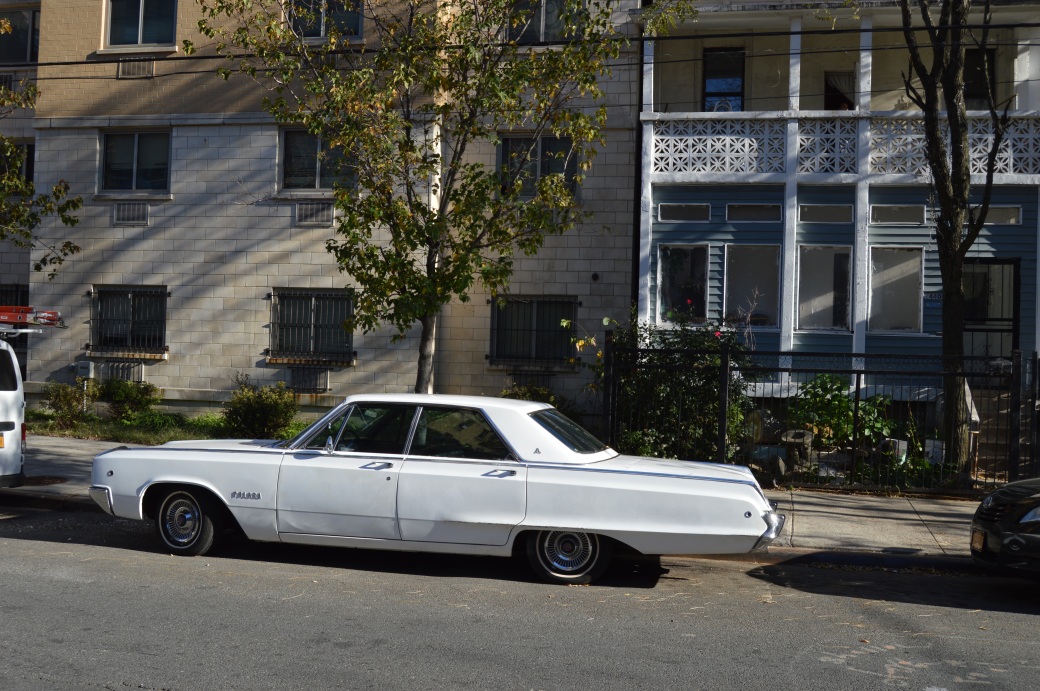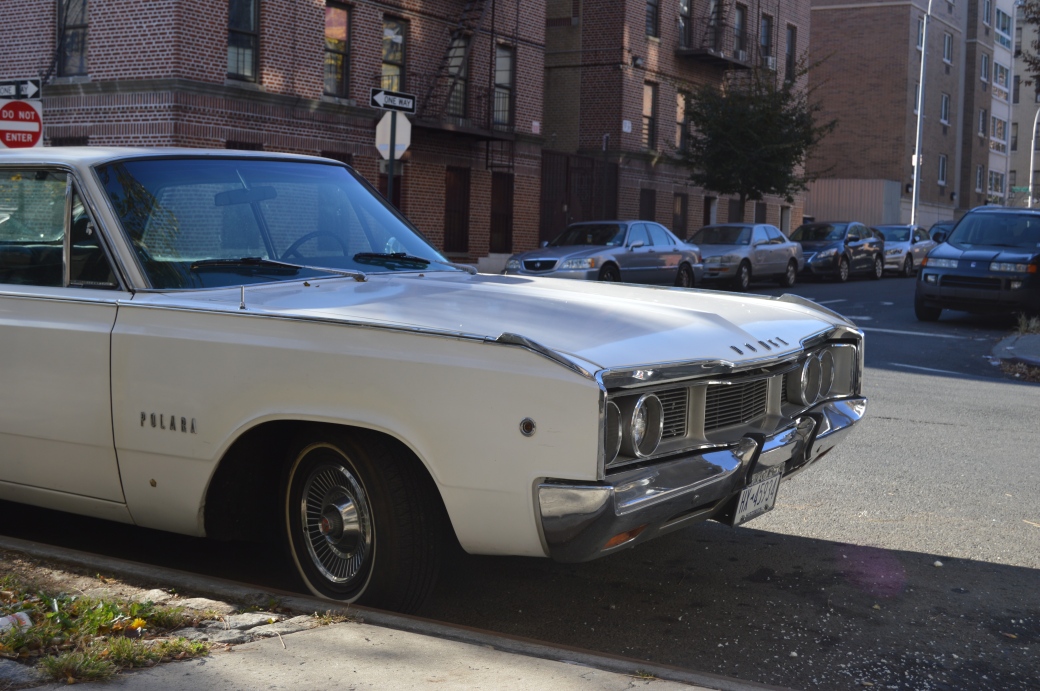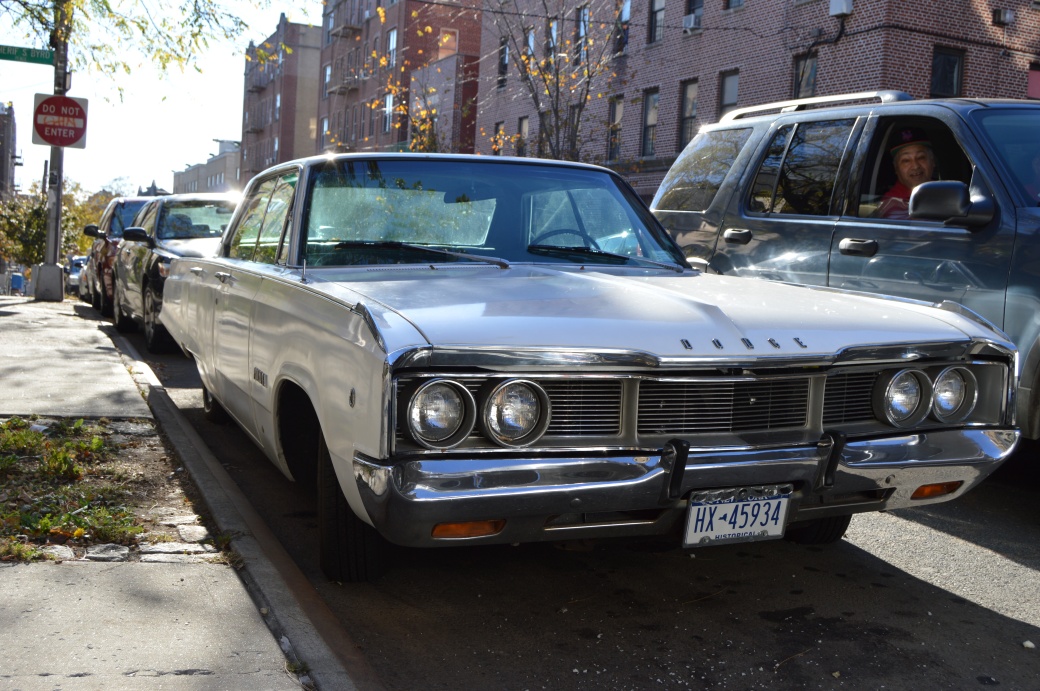
You know how your phone just decides one day to stop being a phone? Like, it’ll just stop doing it’s Jobs-given job. It usually happens in late summer, early fall or so. Right around the time whatever new version of your iAndroid-Windows device is unveiled. There’s a term for that. It’s called planned obsolescence, and it’s been around for longer than it’s taken your iPhone to turn into a brick after flooding your photo library with pictures of Christian Bale’s eye wart. Arguably, it began with this. This is a 1968 Dodge Polara.

The Polara started life in 1960 as the car for the person who didn’t want the smaller, more popular Dodge Dart or the bigger, more expensive Chrysler New Yorker. It also featured unibody construction which is pretty cool- in essence, the body (the parts of the car you can see on the outside) made up the structural integrity of the vehicle, as opposed to having the body panels hang off a rigid frame. It also looked like this, which is just crazy and wonderful and full of fins. By the mid-sixties some level of restraint had taken over, but in spite of that the Polara remained a consistently good looking, or at the very least interesting-looking, car. And part of that had to do with the fact that the Polara’s looks were actually a multitude of always-changing looks. It was like the James Cagney of cars.

For every year that the Dodge Polara was in production, it changed. Yeah sure, it went through the same requisite generations that any semi-popular car goes through (four of them to be exact: one in 1960, one in 1962, one in 1965 and the last in 1969). But even within each of those unique generations, the styling of the car changed. It got a new grille, or a new taillamp design, or some reworked bumpers or chrome accents. Let me give you an example. Here’s what the Polara looked like in 1962. And here’s what it looked like in 1965, bearing in mind that the white car in these pictures was made just three years later, in 1968. All different, right? The reason for this, of course, is simple: money. Dodge had it, and they wanted more of it. Remember, this was the 1960s. People were happy and loose with their money. Cars were status symbols, and extravagance ruled the parking lots.

In the same way that there’s a rush on Apple stores every year when a new iPhone comes out, Dodge was hoping that the public’s connection to the “new” would prompt them to keep buying Polaras. Even though the internals of the car didn’t change that drastically within generations, people’s desire to be seen with the newest car in their driveway would keep them in the dealerships. So did it work? Well, yes and no. When the “new” 1961 Polara was unveiled, Dodge sales plummeted to their lowest levels since the company’s inception in 1914. But for the 1964 restyle, sales saw a healthy bump. By the end of the car’s run though, it was the mid-seventies, the oil crisis was rearing its ugly head, and people were kind of over full size sedans. People voted on each new Polara with their money. And that’s the risk you run with planned obsolescence. Sometimes it works, sometimes it just looks desperate.

I totally forgot to talk about the engine. It was a V8, because of course it was. You could pick from three different displacements, from a 318 cubic inch all the way up to a 440 cubic inch. Power was around the 300 mark, which was okay, especially considering this car weighed two tons at the low end. Disc brakes were available, drums were standard. Polaras could be had as sedans, like this one, but you could have a coupe or a convertible if you wanted, or a wagon if you were a real rad dude. So where does that leave us? With the Polara, Dodge created the car of a thousand faces. A car that changed every year to better key in to whatever trend was sweeping the nation that year. And their efforts worked out pretty averagely. The Polara was a good car, and was by no means a bad seller, but the Dodge that everyone seems to remember from this era is the Dart. I don’t really know what that tells us. I do know I need a new phone though. My old one is all full of Christian Bale’s eye wart.
Additional Thoughts:
- Third generation Polaras are, confusingly, a bit smaller than their competitors. Allegedly, someone at Chrysler overheard some GM execs talking about how they were downsizing their line for the 1965 model year, and decided to take action. It was kind of for naught though, as GM ended up not downsizing at all.
- The fourth generation Polara held the title for fastest police car from the time it was introduced until 2006, when it was beaten by the Dodge Charger.
Pingback: If You Have To Ask | Forgotten metal
Pingback: Forgotten Places: 2016 New York International Auto Show (Part 1) | Forgotten metal
Pingback: Death And Taxis | Forgotten metal